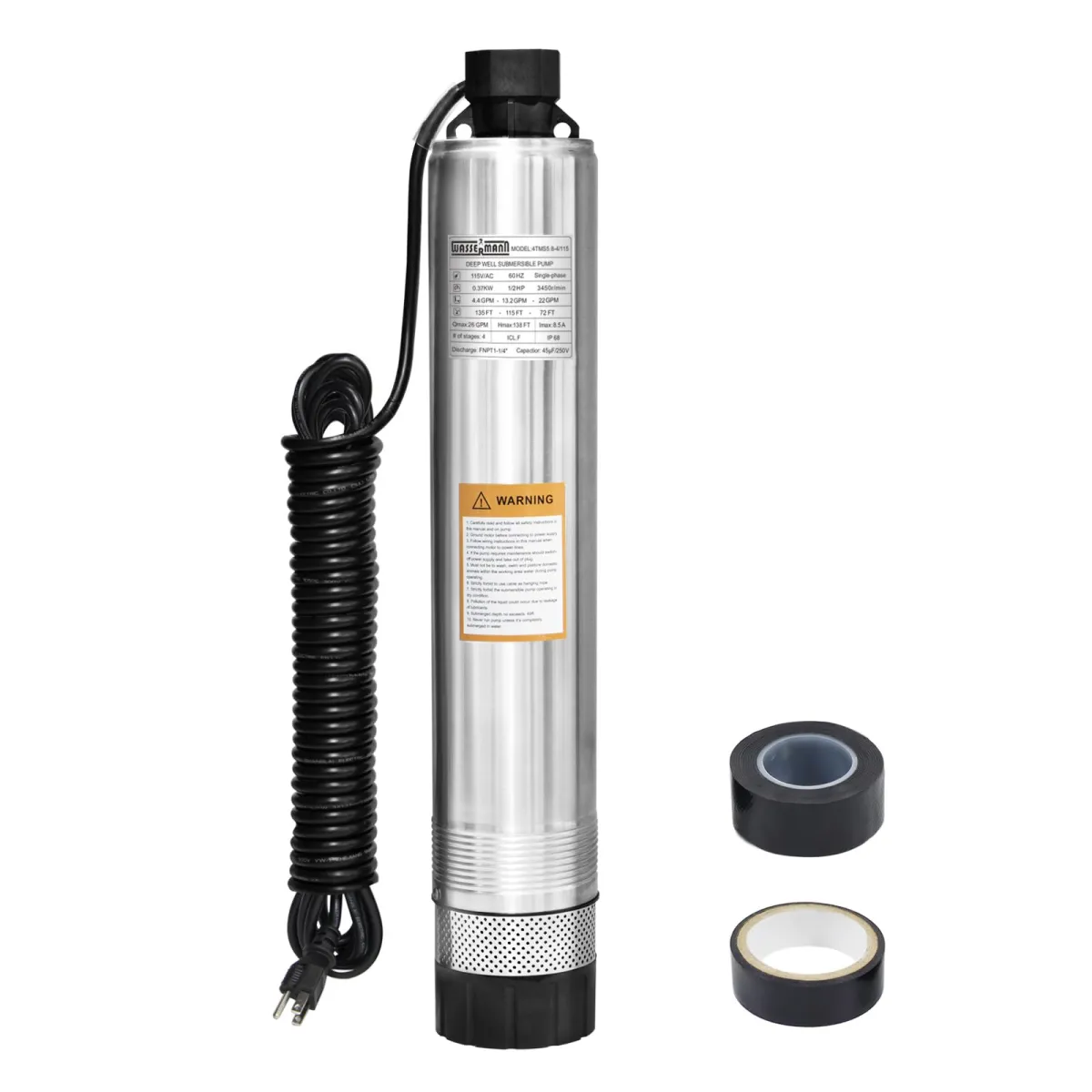
The Best Submersible Pump for Septic Tank: Your Complete Guide

Have you ever woken up to a flooded basement or yard?
Nothing ruins your day quite like septic tank problems. When your septic system fails, it creates a mess that nobody wants to deal with.
But here's the good news: finding the best submersible pump for septic tank systems can save you from this nightmare.
We understand how frustrating septic issues can be. That's why we've put together this simple guide to help you choose the right pump. You'll learn everything you need to know without the confusing technical talk.
What Makes a Great Septic Tank Pump?
Choosing the right pump isn't rocket science. But you do need to know what to look for.
A good septic pump should handle waste water efficiently. It needs to be tough enough to work in harsh conditions. Most importantly, it should last for years without constant repairs.
Here are the key features to consider:
Horsepower rating - More power means better performance
Flow rate - How much water it can move per minute
Durability - Cast iron or stainless steel construction works best
Automatic controls - Float switches that turn the pump on and off
Warranty coverage - Look for at least 2-3 years of protection
Top 5 Best Submersible Pumps for Septic Tanks
We've tested dozens of pumps to find the ones that really work. Here are our top picks:
1. Liberty P382LE41 Pro380 Series
This pump is a workhorse. It handles both residential and light commercial use with ease.
Why we love it:
4/10 HP motor provides plenty of power
Moves up to 83 gallons per minute
Cast iron construction resists corrosion
3-year warranty gives you peace of mind
2. Zoeller M267 Waste-Mate
Perfect for smaller homes and tight budgets. Don't let the lower price fool you - this pump gets the job done.
Key benefits:
1/2 HP motor handles most residential needs
Piggyback float switch for automatic operation
Compact design fits in smaller tanks
Proven reliability from a trusted brand
3. Little Giant 9EN-CIA-RF
This pump combines power with smart design. It's built to last in the toughest conditions.
What makes it special:
Corrosion-resistant epoxy coating
Mechanical float switch won't stick
1/2 HP motor with thermal overload protection
Easy maintenance and repair
4. Franklin Electric Little Giant WGP-65
Great for deep installations and high-volume applications. This pump doesn't quit when others fail.
Top features:
6/10 HP motor for heavy-duty use
Can lift water up to 65 feet
Oil-filled motor runs cooler and lasts longer
Stainless steel construction fights rust
5. Myers WHR5-23
The budget-friendly option that still delivers quality performance. Perfect for basic septic systems.
Why it works:
1/2 HP motor handles standard loads
Simple design means fewer parts to break
Affordable price without sacrificing quality
Easy to install and maintain
How to Choose the Right Size Pump
Size matters when it comes to septic pumps. Too small, and your pump will work too hard and burn out. Too big, and you'll waste money and energy.
Calculate your needs:
First, find out how much water your household uses daily. The average family of four uses about 80 gallons per person per day.
Next, consider your tank size. Most residential tanks hold 1,000 to 1,500 gallons.
Finally, measure the distance from your tank to the drain field. Longer distances need more powerful pumps.
Quick sizing guide:
1-2 bedrooms: 1/3 to 1/2 HP pump
3-4 bedrooms: 1/2 to 3/4 HP pump
5+ bedrooms: 3/4 to 1 HP pump
Installation Tips That Save Money
Installing a septic pump isn't a weekend DIY project. But knowing these tips helps you work with your installer:
Before installation:
Check local codes and permits
Turn off power to the septic system
Have the tank pumped and cleaned
Gather all necessary tools and parts
During installation:
Use proper lifting equipment - these pumps are heavy
Connect electrical wiring according to local codes
Test all float switches before closing the tank
Document the installation for future reference
After installation:
Run the system through several cycles
Check for leaks or unusual noises
Keep installation paperwork in a safe place
Schedule regular maintenance checks
Maintenance Made Simple
Taking care of your septic pump doesn't have to be complicated. A little attention goes a long way.
Monthly checks
Listen for unusual sounds or vibrations
Check that float switches move freely
Look for any visible leaks or damage
Test the alarm if your system has one
Annual maintenance
Have a professional inspect the entire system
Clean debris from around the pump
Check electrical connections
Replace worn parts before they fail
Common Mistakes to Avoid
We've seen these mistakes cost homeowners thousands of dollars. Don't make them yourself:
Never ignore warning signs. Small problems become big expensive ones fast.
Don't use your septic system as a garbage disposal. Grease, chemicals, and non-biodegradable items damage pumps.
Avoid cheap knockoff pumps. They might save money upfront but cost more in repairs later.
Don't skip professional installation. Improper setup voids warranties and creates safety hazards.
When to Call a Professional
Some septic pump problems need expert help. Don't risk your safety or make things worse.
Call a pro when:
You smell gas or sewage in your home
Electrical problems occur with the pump
The pump needs major repairs or replacement
Local codes require professional installation
Remember, a good contractor saves you time and prevents costly mistakes.
Your Next Steps
Now you know how to find the best submersible pump for septic tank systems. The key is matching the right pump to your specific needs.
Start by measuring your household's water usage and tank requirements. Then choose a pump from our recommended list that fits your budget and needs.
Don't wait until your current pump fails completely. Planning ahead saves money and prevents messy emergencies. With the right pump and proper maintenance, your septic system will serve you well for years to come.

© 2025 | All Rights Reserved | Privacy Policy